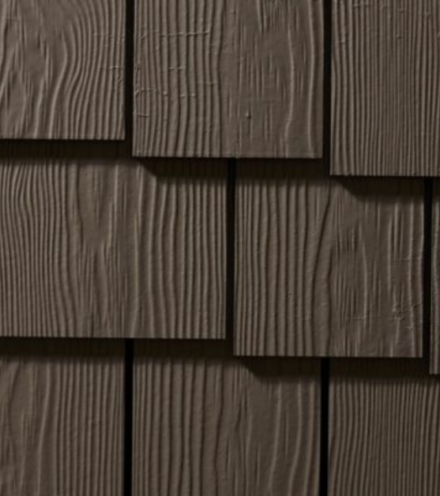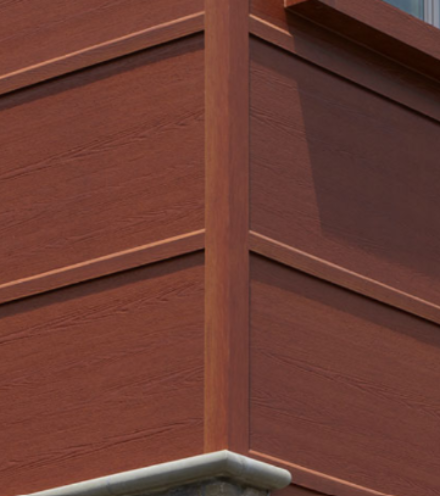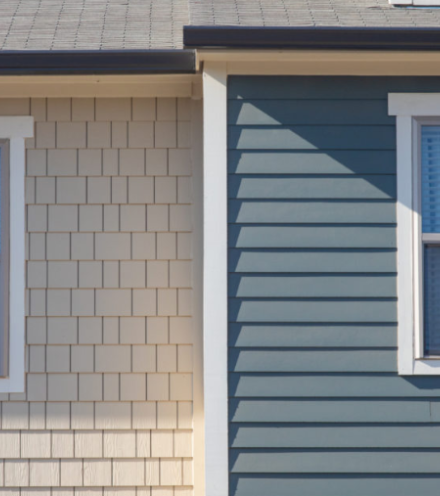Have you ever wondered how much damage constant rain and humidity can do to your home’s exterior? If you live in a wet climate, the materials you choose for siding play a crucial role in protecting your home from rain and moisture damage.
In this article, we’ll explore the best siding options that not only resist moisture but also provide a modern, sleek appearance that any homeowner would love. From fiber cement to composite siding, we’ll explore everything you need to know to find the best siding options in wet climates. Let’s dive in!
The Importance of Quality Siding in Wet Climates

When it comes to wet climates, not all siding materials are created equal. Constant exposure to rain, humidity, and moisture can lead to serious issues like mildew, mold, and rot. Without the right protection, your home could be at risk of serious structural damage over time. That’s why it’s essential to invest in durable, moisture-resistant siding.
Quality siding also ensures that your home remains energy-efficient. Water-resistant materials keep moisture out and help regulate indoor temperatures. Plus, they minimize the need for costly repairs or replacements. In wet climates, durable and effective siding isn’t just a choice but a necessity.
The Best Siding Options for Wet Climates
When selecting the best siding for wet climates, you need to balance functionality with modern elegance. Below, we’ll explore the best siding options for wet climates and help you determine which one is right for your home.
1. Fiber Cement Siding

Fiber cement siding is a number one choice for homeowners in wet climates for several reasons. Its composition makes it highly durable and resistant to rot, mold, and mildew. Unlike wood, fiber cement doesn’t absorb water, preventing warping and swelling over time. Plus, it comes in a variety of textures and finishes, making it easy to achieve whatever look or design you like.
When it comes to durability and style, Allura’s fiber cement siding seriously stands out. With superior moisture resistance and long-lasting durability, it’s built to stand up against even the harshest climates. Check out their extensive product line to learn more!
2. Engineered Wood Siding
Engineered wood siding offers the charm of natural wood but with added protection against moisture. Treated to resist water and fungal decay, it’s an excellent choice for maintaining a warm, traditional look without sacrificing performance in wet climates. Proper maintenance will also ensure that it holds up well under damp conditions.
3. Vinyl Siding
Vinyl siding performs exceptionally well in wet climates due to its water-resistant properties. It doesn’t absorb moisture, which helps prevent mold, rot, and warping. Plus, vinyl is super low-maintenance, making it easy to clean and manage in humid conditions.
4. Metal Siding
Metal siding, particularly when treated for rust and corrosion resistance, is a super durable option for wet climates. Modern metal siding withstands rain exposure, remains rust-free, and holds up well against harsh weather conditions. With its sleek, industrial appeal, metal siding is the perfect choice for some home designs, depending on your design aesthetic and needs.
5. Stone Veneer Siding
Stone veneer siding provides a natural solution to moisture resistance. Both natural stone and manufactured stone veneer are built to withstand rain and high humidity. In addition to moisture control, stone veneer also adds a luxurious, modern touch to home exteriors. Plus, it’s designed for longevity, ensuring your home looks stylish and remains protected against moisture damage for years to come.
6. Brick Siding
Brick has long been a reliable material for water resistance. Its dense structure doesn’t absorb much moisture, making it a natural barrier against rain. Brick siding also works for both traditional and modern designs. That said, if you live in a wet climate, your home must have proper drainage systems in place to avoid water buildup behind the bricks.
7. Composite Siding
Composite siding mimics the look of natural materials while offering exceptional moisture resistance. Engineered for weather resilience, it’s built to withstand harsh conditions like heavy rain and humidity. Composite materials also have low absorption, meaning they don’t take in water, reducing the risk of mold and mildew.
Which Option is the Best Siding for Wet Climates?

When choosing siding for wet climates, it’s vital to consider the benefits and potential disadvantages of each material. Engineered wood siding offers a natural look and water-resistant treatment, but it requires regular maintenance to prevent decay and warping.
Vinyl siding is water-resistant and low-maintenance but can become super brittle in cold weather and may fade or crack over time, which can allow moisture to seep in. Metal siding resists rust when treated, but it’s prone to denting and expansion due to temperature changes, which can lead to gaps and potential water damage.
Other materials like stone veneer and brick are naturally water-resistant but come with their own challenges. Stone veneer, though durable, requires proper drainage systems to prevent moisture from getting trapped behind the stones, while brick can be costly and relies on well-designed drainage to avoid water buildup behind the walls.
Composite siding, on the other hand, can warp or swell if it’s exposed to moisture for prolonged periods and may not be as durable in consistently damp environments. As a result, if you’re looking for a material that combines durability, water resistance, and modern style, fiber cement siding is the best option, especially in wet climates.
What Makes Fiber Cement the Superior Choice?

Unlike other materials, fiber cement doesn’t absorb moisture, swell, or warp, and it resists mold, mildew, and rot even under constant rain. Fiber cement also requires less maintenance than wood or vinyl, making it a long-lasting, durable solution that you don’t have to stress about. With products like Allura’s fiber cement siding, you get style and protection from even the harshest weather.
Protect Your Home with Fiber Cement Siding from Allura

Ready to protect your home from moisture while achieving a sleek, modern look? Allura’s fiber cement siding offers the durability and style you need for wet climates. With options that resist mold, mildew, and constant exposure to rain, your home will stay protected and beautiful for years to come.
Contact Allura today to get started on your next project!




